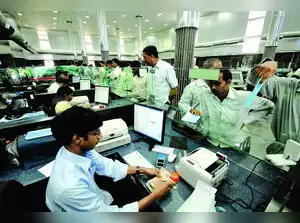Strategic investment in employee upskilling is emerging as a crucial factor for enhancing the employee experience within the Philippine labor market. Beyond its traditional role as a peripheral training function, it has become a critical driver of talent retention and an essential prerequisite for organisational resilience and sustained competitive advantage.
This is especially urgent because the Philippines is facing a major skills gap. By 2030, an estimated 68% of the Filipino workforce will need more training, according to the World Economic Forum. This isn’t a problem for the future, either. Already, nearly half of all Philippine organisations are struggling to find people with the right skills..
The challenge is intensified by a rapidly evolving technological landscape. Generative artificial intelligence (AI) and widespread digitalisation are reshaping industries, job roles, and required competencies.
For instance, the human share of work tasks in the Philippines is expected to decline from 43 percent currently to just 26 percent by 2030, according to the International Trade Administration. Meanwhile, technology’s contribution is projected to surge to 38 percent.
All figures point to an automation shift that is more aggressive and accelerated than the global average, placing immense pressure on the Filipino workforce to adapt at an unprecedented speed.
Upskilling drives employee loyalty and retention
Multiple studies have shown that the connection is clear: invest in your people, and they’ll stay. Many employees say they would remain with their company longer if it invested in their development.
In fact, a lack of career opportunities is why a good number of Filipino professionals resign, and workers who feel confident about their growth path are more likely to stay for the next year.
Moreover, today’s Filipino professional wants more than just a paycheck. They prioritise work-life balance, flexibility, and real opportunities for growth.
Nearly half (49%) would even turn down a promotion if it meant sacrificing their well-being. This creates a tough spot for employers, with 34% of Philippine companies struggling to retain staff—a rate higher than the APAC average.
Beyond just keeping employees, continuous learning meets their core needs. It gives them a stronger sense of purpose at work (77% agree) and reduces job-related anxiety.
Also, with more and more Filipino employees worried that AI will affect their careers, upskilling is a clear signal that the company is investing in its people’s future, turning a potential threat into an opportunity for growth.
What happens if you don’t invest? The costs are staggering. Globally, lost productivity from disengaged employees costs an estimated $438 billion in 2024, according to Gallup. Closer to home, the cost to replace a single employee can be three to four times their annual salary when you factor in recruitment, onboarding, and lost output.
By shifting resources from reactive hiring to proactive development, you build a more stable, skilled, and loyal workforce while cutting down on these massive attrition costs.
A national effort for skills transformation
The scale of the skills transformation required in the Philippines is immense, demanding a coordinated response from both the public and private sectors.
The Philippine government has demonstrated a clear understanding of this challenge, proactively creating a national framework to support a massive upskilling effort.
At the center of this national effort is the National AI Upskilling Roadmap, approved by President Ferdinand Marcos Jr. It is a comprehensive strategy that aims to prepare the entire nation for an AI-driven economy through a multifaceted approach.
The program includes promoting digital literacy for the public, providing specialised AI training for professionals, and integrating these competencies into the national education curriculum.
In the private sector, the Information Technology and Business Process Management (IT-BPM) industry in the Philippines offers a compelling case study.
As a cornerstone of the national economy, with revenue projected to exceed $40 billion by 2025, it faces significant pressures, including employee attrition rates that can range from 30 to 40 percent in some segments.
Compounding this is a notable skills mismatch; industry data indicates that only 15 out of every 100 applicants are hired, largely due to a lack of required skills.
In response, the IT-BPM industry, led by the IT & Business Process Association of the Philippines (IBPAP), has initiated one of the country’s most ambitious and coordinated upskilling campaigns.
IBPAP aims to create an additional 1.1 million new, high-value jobs by 2028, a goal entirely dependent on successful workforce development.
A ₱740 million (approximately $13.1 million) upskilling program, developed in partnership with government agencies, is designed to fund targeted training that addresses critical skill gaps.
Developing an effective upskilling strategy
Translating the strategic imperative of upskilling into effective execution requires a deliberate framework. Based on successful practices, organisations can adopt a five-pronged approach:
Foster a culture of continuous learning:
Shift the organisational mindset from sporadic training to embracing learning as an ongoing, integral part of daily work. Strategies include informal “Lunch and Learn” sessions, peer-to-peer knowledge sharing, internal mentorship programs, and gamification.
Link training to career growth and mobility:
Employees must see a clear connection between learning and their career progression. This involves collaborative development of Individual Development Plans (IDPs) that explicitly link learning opportunities to transparent career paths. Prioritising internal candidates for open positions reinforces this commitment.
Leverage a blended ecosystem of learning resources:
Utilise a rich blend of learning resources. This includes internal programs like mentorship and peer learning groups, alongside access to high-quality online platforms such as Coursera and LinkedIn Learning. Partnering with government and industry-wide initiatives, such as those by TESDA or IBPAP, can provide access to subsidised and industry-vetted training.
Empower managers as coaches and talent developers:
The immediate line manager is crucial for employee development; 70 percent of a team’s engagement level is directly attributable to the manager. Organisations must invest in training managers to transition from taskmasters to coaches, equipping them with skills to conduct regular development conversations and provide constructive feedback.
Measure what matters by tracking impact and ROI:
To ensure an upskilling strategy delivers value, organisations must move beyond simplistic metrics. This requires people analytics to track the correlation between participation in upskilling programs and key business metrics such as employee retention rates, internal promotion rates, and engagement scores. Qualitative data from “stay interviews” can provide rich insights into employee values.
The Philippines stands at a significant demographic and economic inflection point. Its young, dynamic, and digitally native population represents a significant strategic asset. The future of work in the country will undoubtedly be powered by technology and artificial intelligence.
However, the companies that will truly thrive—those that lead, innovate, and endure—will be those that understand this future must be fundamentally human-led. Progress is ultimately driven by the ingenuity, creativity, and passion of a skilled and empowered workforce. The time to invest in that workforce is now.




















